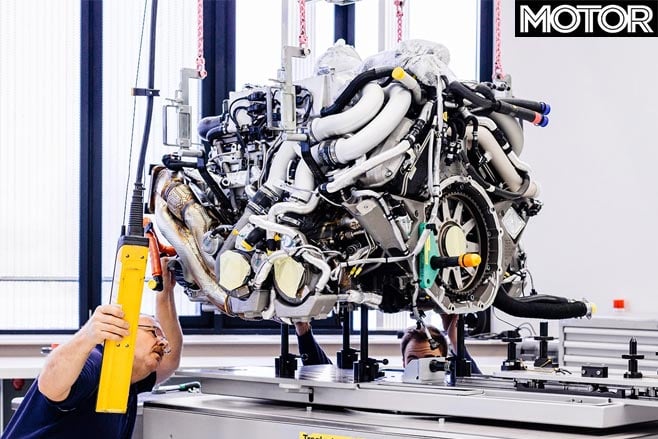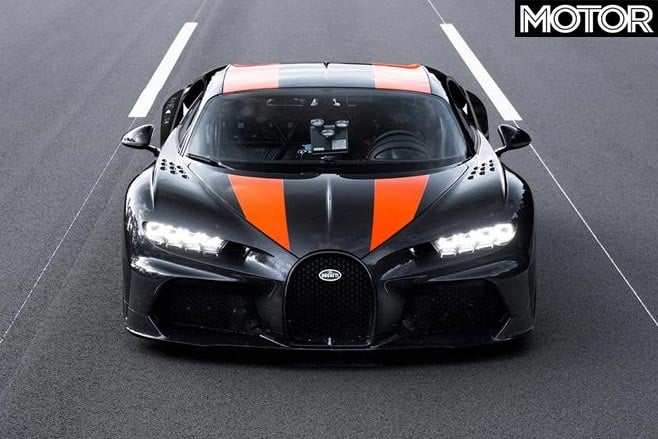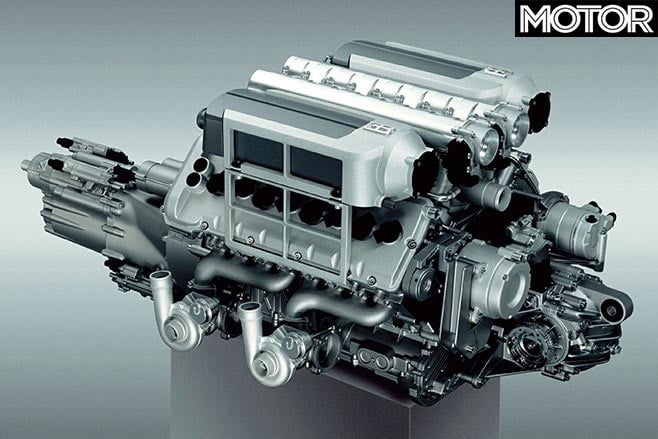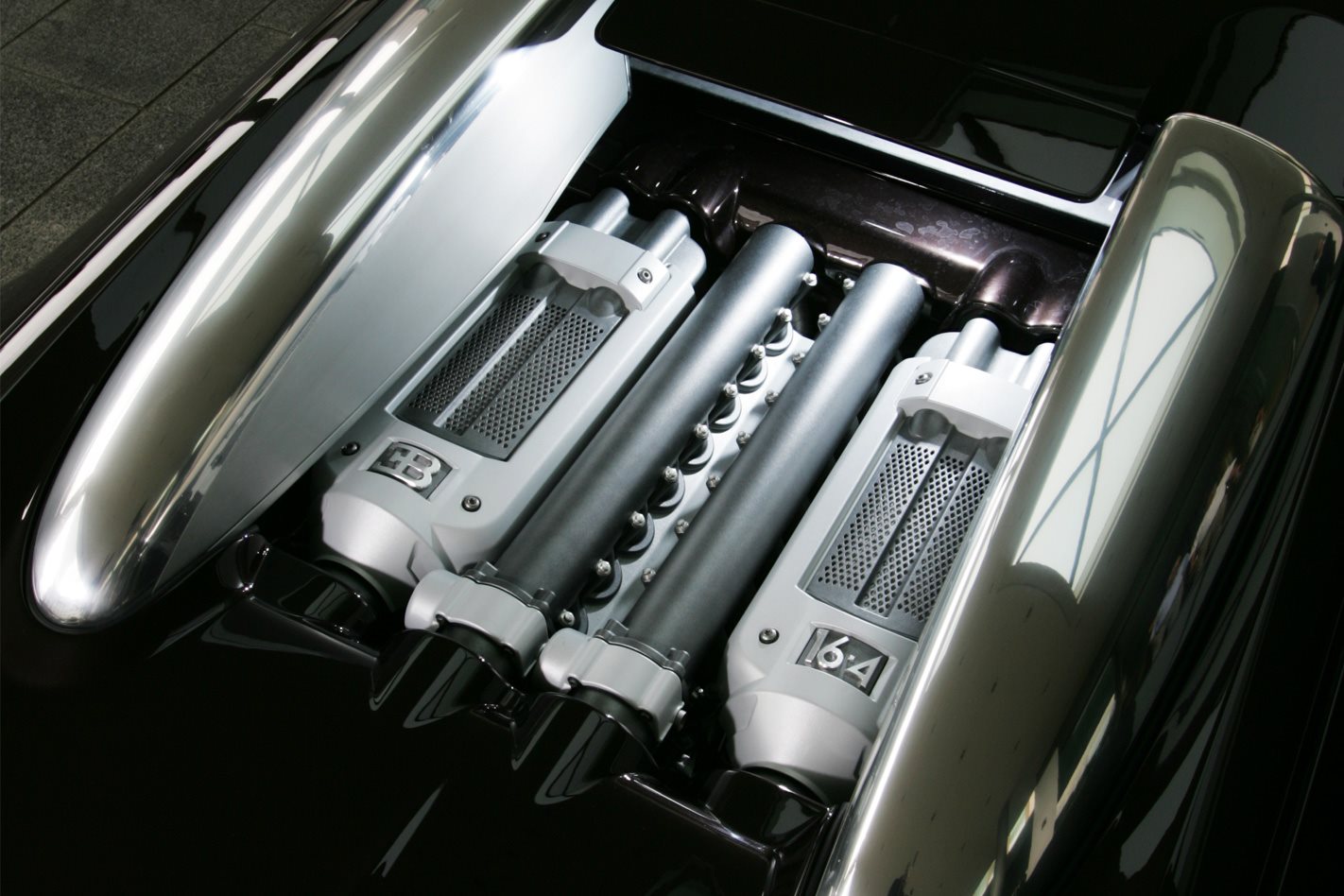If ever there was a donk that didn’t need a power-up, the quad-turbo Bugatti W16 was it.
Despite that, the Bugatti Chiron solved the shortcomings of the Veyron – it wasn’t fast enough, obviously – by being more powerful (and lighter).
How does a W16 engine work?
The W16 engine gets its W16 designation because it’s (in a way, sort of) made up of two narrow-angle V8s, which kinda forms a ‘W’, but not really. The vee in the V8s is so narrow (15 degrees) that a pair of camshafts can open and shut all 32 valves for each bank of eight cylinders, unlike in most overhead-cam V8s, which have quad camshafts. The angle between the two V8 banks is 90 degrees – see, not really a ‘W’.
Now, when we say the W16 is made up of two V8 engines, it’s not actually two engines geared together. It’s a single, massive engine with one crankshaft – calling it a pair of V8s is just a handy way to help visualise this unholy conglomeration of pistons.
Here’s how the Chiron’s W16 sounds

The engine is square, with an 86mm bore and stroke, which is undoubtedly the sole specification the Veyron shares with the Toyota 86. Each piston displaces 499.56cc for a total engine capacity of 7993cc or 8.0 litres. A pair of turbochargers per cylinder bank (for a total of four turbos) pump air at 18psi via a pair of charge-cooling liquid-to-air intercoolers, with three heat exchangers.
According to Bugatti, the Chrion’s official 736kW (at 6000rpm) output was conservative, and the real figure is 750kW, or more than 1000hp. The torque figure is 1250Nm, though this is for the base model, as the Super Sport makes 1500Nm and 880kW – this is the car that held the 431km/h top-speed record (the entry-level Veyron hits its peak at just 407km/h).
But Veyrons? They’re slugs that are no longer on sale. Direct injection and extra boost in the Chiron lift outputs from the W16 quad-turbo to 1103kW and 1600Nm, it arrives lower in the rev range courtesy of clever electronically controlled turbochargers.

Meanwhile, a redesigned carbonfibre monocoque chassis reduces the Chiron’s weight compared with the 1888kg Veyron, and it adds torque-vectoring all-wheel drive to its repertoire.
Five quick Bugatti W16 engine facts
1. HUMBLE ORIGINS The Bentley/VW W16’s origins can be traced to the 1991 VW Golf VR6, which used a narrow angle (15 degree) design to package a 2.8-litre V6 in a small front-wheel drive.
2. Which other cars have W16 engines? The Volkswagen Group has dabbled with W-formation multi-pot engines for more than a decade, in the Phaeton (W8), the Bentley Continental (W12) and concepts including the EB 18.4 Veyron (W18).
3. How big is a W16 engine? The W cylinder configuration is favoured because of its compactness. The Bentley W16 is less than half the length of an in-line 16, yet not a lot wider. It measures 710mm long, 889mm wide and 730mm high.
4. Fuel consumption City fuel consumption of 29.0L/100km looks okay alongside the top-speed thirst of 5.0L/minute. If you had the road to keep the Veyron pinned (more than 130km), it would empty its fuel tank in 20 minutes.
5. Bugatti’s W16 engine firing order The firing order for the hand-built, dry-sumped Veyron engine is 1-14-9-4-7-12-15-6-13-8-3-16-11-2-5-10, in case you wondered. Stick that in your noggin’ for trivia night or for your job interview at MOTOR.

War of Words: Bugatti v Hennessey
In 2013, Texas supercar maker Hennessey Performance Engineering disputed the Veyron Super Sport’s 431km/h world record on the grounds that it was achieved with the Bugatti’s 415km/h electronic speed limiter disabled.
Hennessey’s 928kW Lotus Exige-based Venom GT could do 427.6km/h in completely standard form. The Veyron’s record was duly suspended by Guinness World Records and it was reclaimed by the Shelby Supercars Ultimate Aero TT.
Less than a week later, Guinness reinstated the Veyron’s record, concluding that “a change to the speed limiter does not alter the fundamental design of the car or its engine.”





